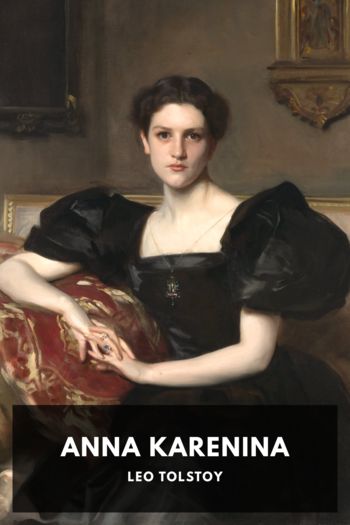What Is Art? Leo Tolstoy (good books to read for 12 year olds TXT) 📖

- Author: Leo Tolstoy
Book online «What Is Art? Leo Tolstoy (good books to read for 12 year olds TXT) 📖». Author Leo Tolstoy
Since science, like art, is a “human activity,” that science best deserves our esteem, best deserves to be “chosen, tolerated, approved, and diffused,” which treats of what is supremely important to man; which deals with urgent, vital, inevitable problems of actual life. Such science as this brings “to the consciousness of men the truths that flow from the religious perception of our times,” and “indicates the various methods of applying this consciousness to life.” “Art should transform this perception into feeling.”
The “science” which is occupied in “pouring liquids from one jar into another, or analysing the spectrum, or cutting up frogs and porpoises,” is no use for rendering such guidance to art, though capable of practical applications which, under a more righteous system of society, might greatly have lightened the sufferings of mankind.
Naturally enough, the last chapter of the book deals with the relation between science and art. And the conclusion is that:
“The destiny of art in our time is to transmit from the realm of reason to the realm of feeling the truth that well-being for men consists in being united together, and to set up, in place of the existing reign of force, that kingdom of God, i.e. of love, which we all recognise to be the highest aim of human life.”
And this art of the future will not be poorer, but far richer, in subject-matter than the art of today. From the lullaby—that will delight millions of people, generation after generation—to the highest religious art, dealing with strong, rich, and varied emotions flowing from a fresh outlook upon life and all its problems—the field open for good art is enormous. With so much to say that is urgently important to all, the art of the future will, in matter of form also, be far superior to our art in “clearness, beauty, simplicity, and compression” (see here).
For beauty (i.e., “that which pleases”)—though it depends on taste, and can furnish no criterion for art—will be a natural characteristic of work done, not for hire, nor even for fame, but because men, living a natural and healthy life, wish to share the “highest spiritual strength which passes through them” with the greatest possible number of others. The feelings such an artist wishes to share, he will transmit in a way that will please him, and will please other men who share his nature.
Morality is in the nature of things—we cannot escape it.
In a society where each man sets himself to obtain wealth, the difficulty of obtaining an honest living tends to become greater and greater. The more keenly a society pants to obtain “that which pleases,” and puts this forward as the first and great consideration, the more puerile and worthless will their art become. But in a society which sought, primarily, for right relations between its members, an abundance would easily be obtainable for all; and when “religious perception” guides a people’s art—beauty inevitably results, as has always been the case when men have seized a fresh perception of life and of its purpose.
An illustration which Tolstoy struck out of the work while it was being printed, may serve to illustrate how, with the aid of the principles explained above, we may judge of the merits of any work professing to be art.
Take Romeo and Juliet. The conventional view is that Shakespeare is the greatest of artists, and that Romeo and Juliet is one of his good plays. Why this is so nobody can tell you. It is so: that is the way certain people feel about it. They are “the authorities,” and to doubt their dictum is to show that you know nothing about art. Tolstoy does not agree with them in their estimate of Shakespeare, therefore Tolstoy is wrong!
But now let us apply Tolstoy’s view of art to Romeo and Juliet. He does not deny that it infects. “Let us admit that it is a work of art, that it infects (though it is so artificial that it can infect only those who have been carefully educated thereunto); but what are the feelings it transmits?”
That is to say, judging by the internal test, Tolstoy admits that Romeo and Juliet unites him to its author and to other people in feeling. But the work is very far from being one of “universal” art—only a small minority of people ever have cared, or ever will care, for it. Even in England, or even in the layer of European society it is best adapted to reach, it only touches a minority, and does not approach the universality attained by the story of Joseph and many pieces of folklore.
But perhaps the subject-matter, the feeling with which Romeo and Juliet infects those whom it does reach, lifts it into the class of the highest religious art? Not so. The feeling is one of the attractiveness of “love at first sight.” A girl fourteen years old and a young man meet at an aristocratic party, where there is feasting and pleasure and idleness, and, without knowing each other’s minds, they fall in love as the birds and beasts do. If any feeling is transmitted to us, it is the feeling that there is a pleasure in these things. Somewhere, in most natures, there dwells, dominant or dormant, an inclination to let such physical sexual attraction guide our course in life. To give it a plain name, it is “sensuality.” “How can I, father or mother of a daughter of Juliet’s age, wish that those foul feelings which the play transmits should be communicated to my daughter? And if the feelings





Comments (0)